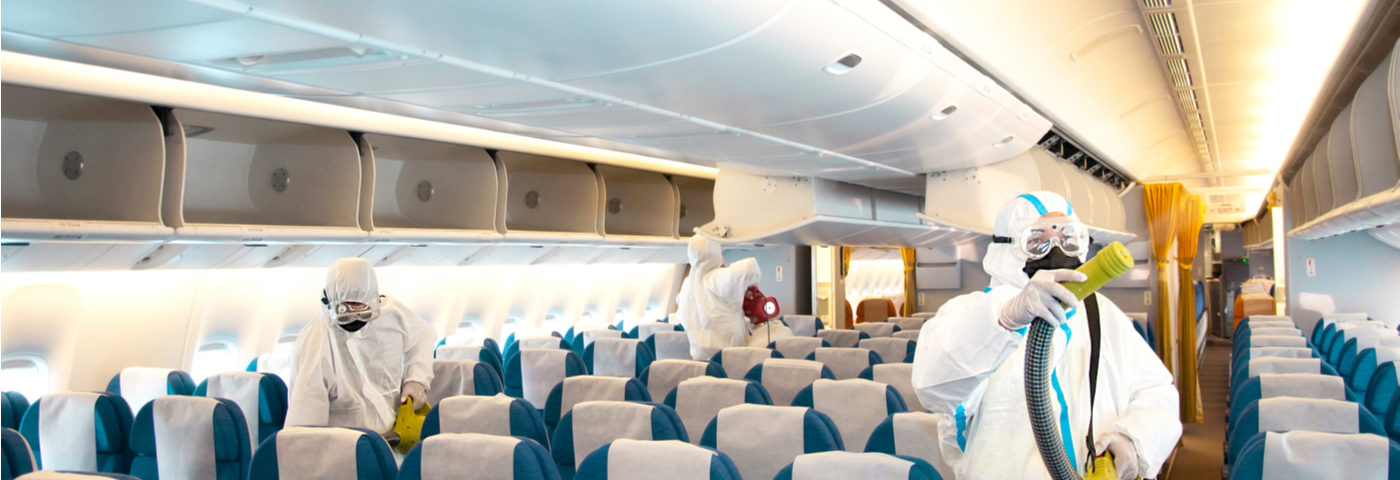The experience of travelling by plane is set to change forever. New restrictions and regulations will appear for every part of the journey due to COVID-19. Travellers will be reluctant to return at first but clear and simple communication from travel operators, airports and airlines need to show the steps they are taking to keep passengers safe to encourage this return.
Setting expectations for travel
Before travel even begins, each customer should be aware of any changes to their flight. This should include information on mandatory masks or screening before travel. Passengers are already used to warnings on restricted items and airlines should similarly share this information.
Emirates has been quick to introduce testing before its flights. Thermal screening is taking place at Dubai Airport on all departures and arrivals.
In the USA, Airlines for America is also pushing for mandatory temperature checks. This will cause longer wait times but is one way to reassure travellers.
Inside the terminal
Airports around the world will introduce further measures along with testing and screening. Hong Kong Airport has introduced a couple of technological solutions to the problem. They have installed a full disinfectant chamber that takes 40 seconds to spray passengers before boarding. Autonomous robots are also roaming the terminals and covering surfaces with anti-bacterial spray.
Travellers can also expect to see more digital boarding methods to reduce interaction with crew members. This will be through face scanning and increased use of on-device boarding cards.
On the plane
Once passengers are onboard, there are set to be even more changes to the experience. An initial response from airlines is to block out middle seats and increase the distance between passengers inside the cabin. This restriction is unlikely to remain long term as airlines struggle to reach profitability.
Airlines and cabin manufacturers will also need to educate passengers on how they are going about cleaning the planes. Emirates has been one of the first to give a behind-the-scenes look at how they are cleaning their planes. The extensive process can last up to eight hours but the deep cleaning is necessary to remove any traces of the virus.
The video also includes details of their air conditioning system. While air is recirculated inside the cabin, it is pulled up and away from other passengers. It then travels through powerful HEPA filters that remove 99.97% of viruses. This advanced system is more powerful than household air conditioning systems and informing customers of its effectiveness will increase confidence.
Common features during the flight such as meal and drink service are also set to change. It is necessary to reduce touchpoints between staff and travellers. Delta Airlines has introduced sealed snack packs, with the bag also doubling as a way for passengers to dispose of the used items.
Flights that serve larger meals are also delivering them in sealed boxes. This is another way to reduce interaction between crew and passengers.
Clear and Simple
Making sure the passenger feels safe and is aware of all changes will be the best way to increase demand once lockdowns are relaxed.
This article was provided by Aircraft Interiors Expo, the leading event for the Aircraft Interiors industry and supply chain.
You may also be interested in…
- Air travel shown to rebound quickly once travel restrictions lifted
- Airlines in Crisis: The Prognosis For The Aftermath of COVID-19
- Time for airlines to revisit new-and-improved virtual reality



Eight hours to properly deep clean an aeroplane will mean much much less flying for the interim. It also will mean increased fairs. It’s going to be very easy to achieve Greta’s reduction in our Global Carbon Footprint for 2020. Brent crude being best value for the foreseeable future may counteract the fall further downwards for flying.